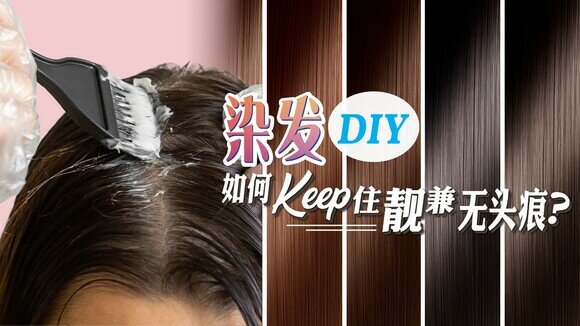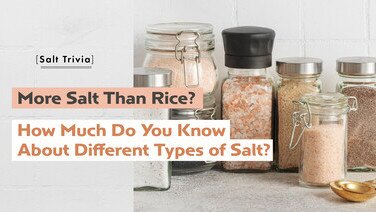Composition of the hair dye determines durability
The first step of hair dyeing is, of course, choosing the right hair dye product. Hair dye products can generally be divided into the three types, according to the durability of the dyeing effect:
1. Permanent
In addition to dyes, permanent hair dye products will contain two other main ingredients that allow the dye to stay permanently in the hair: ammonia, which opens the cuticle layer of the hair and enable the dye to enter the cortical layer; and hydrogen peroxide, which removes the natural colour of the hair and allows the dye to attach to the cortex. Permanent hair dye products enable people to dye all their hair and change their hair colour completely, but the disadvantage is the risk of damaging the hair surface, resulting in dry or frizzy hair.
2. Semi-permanent
Ammonia or hydrogen peroxide is generally not added in semi permanent hair dye product, although some products may contain a small amount of ammonia type chemicals, slightly opening the cuticles of the hair and allowing some dyes to enter the inner cortex, but the rest will only stick to the surface of the hair. Therefore, usually after around 10 or more washing, the hair colour will gradually fade. Semi-permanent hair dyes are more suitable for people whose hair has been dyed previously, or whose hair has been damaged but need to change their hair colour briefly. However, the downside is that hair dyeing process may usually take longer, and if you want to keep the beautiful hair colour, you may have to re-dye it every few days or every week.
3. Temporary
Temporary hair dye product will not open the cuticle layer so the dye will only stay on the surface of the hair. The colour will normally fade completely after washing with shampoo and usually does not cause damage to the hair. This is suitable for consumers who only need to make a one-off change to the colour of their hair.
Avoid products containing allergenic ingredients
1. Recognize common allergenic ingredients
Depending on your needs and preference, you have to decide what type of hair dye product to use. After that, you need to carefully select those products that contain less allergens. Beware if you find these 4 allergenic chemicals in the ingredient list: p-Phenylenediamine (PPD), o-Phenylenediamine (OPD), m-Phenylenediamine (MPD) and toluene-2, 5-diamine (PTD).
These chemicals are defined by the CLP Regulation of the European Union (EU) as acute toxic and allergenic substances (Skin Sensitizing Category 1). OPD is a Category 2 carcinogen (Carcinogenic Category 2), while OPD and MPD are Category 2 substances that can cause permanent mutations in genes (Mutagenic Category 2) and should not be used in cosmetics.
The Pharmacy and Poisons Ordinance (Cap. 138A) of the Laws of Hong Kong requires hair dyes containing amphetamines, toluene or other alkalides or their salts to specify these ingredients and their amount on the packaging, as well as the following warning in Chinese and English: "Caution: This preparation may cause serious inflammation of the skin in certain persons and should be used only in accordance with expert advice”.
2. Beware of banned ingredients
In addition, 3-Aminophenol (MAP), 4-Aminophenol (PAP), resorcinol and hydroquinone are 4 chemicals which are regarded as acute toxic substances. Hydroquinone is a Category 2 carcinogen, and 4-aminophenol is also defined, according to CLP Regulations, as a Category 2 mutagenic chemical substance that can cause permanent mutations in genes. Although they are not currently listed as prohibited ingredients in Hong Kong, they are prohibited under the EU Cosmetics Regulations and the Technical Safety Standard of Mainland China, and are banned in cosmetics, including hair dyes.
Why do hair dyes contain these ingredients?
These chemicals are the dye (pigment) that gives color to the hair, which produces different hues when present independently or simultaneously under oxidization. PPD is most common in oxidizing hair dyes because it can be mixed with other chemicals to give brightly coloured dyes.
However, a study found that about 1 to 6% of the population in Europe, America and Asia have an allergic reaction to PPD, which majority of those populations are female. The most common allergic symptoms are itching, and many people will also feel pricking, drying and burning sensations. In addition, some people may develop erythema and plaques, and in severe cases complications include contact urticaria, angioedema, hair loss, bronchospasms, asthma, kidney poisoning etc., posing threats to life and health.
3. Beware of ammonia exceeding the standard
As mentioned above, permanent hair dyes usually contain ammonia. However, besides having a pungent odour, ammonia can easily cause allergy to the scalp and eyes, so according to the regulations of the EU and the Mainland in cosmetics, the highest concentration of ammonia used in cosmetics is limited to 6%.
4. Don't blindly trust claims to be “natural”
People with skin allergies may prefer to choose products that are labelled as more "natural". However, the Consumer Council found that some of the samples claiming to be natural contained rather high levels of allergens, including banned carcinogens. Therefore, consumers must not let down their guard.
Nowadays, the most widely used natural hair dye is henna hair dye powder. The Council detected allergenic substances in three related products on the market, with levels even higher than permanent hair dye. Due to its long hair dyeing time, many manufacturers will add chemicals to hair dyeing powder to improve the colouring effect and shorten the hair dyeing time. If consumers find that the product is not labelled with ingredients, and is marked with words such as "quickly dyed black or other bright colours", it is possible that chemicals have been added.
In addition, the bacterial content of all herbal henna samples exceeded the allowable microbial content limit of the Mainland. Because of the long hair dyeing time and the need for frequent re-dyeing, the health risks to the body posed by chemicals and microorganisms can be increased.
It is also worth mentioning that people suffering from Glucose-6-Phosphate Dehydrogenase (G6PD) deficiency should not use henna as the ingredients may cause haemolytic reactions.
5. Avoid choosing brands for professional use
Hair dyes for commercial hair salons generally have stronger colouring effect. However consumers may not be able to understand their method of use, purchase of such products for home use will increase risks. Because the instructions for using professional hair dyes are usually more complex. For example, pigments with different colour numbers may need to be mixed with different concentrations of colour rendering agents, and the operating time is also different. Failure to mix hair dyes in the right proportions or over timing can increase the risk of allergies or make the hair dye less effective.
6 safe steps when using hair dye products
After selecting a suitable hair dye, you should pay attention to the following 6 points before you prepare to dye your hair:
1. Take a skin allergy test first
Even if a product with relatively safe ingredients is selected, consumers should conduct a skin allergy test just in case. The ingredients of different colour formulas may be different even for the same brand of hair dye so a skin contact test should be conducted again to see whether it will cause allergies.
The general test method is applying a small amount of hair dye mixture on the wrist, the inside of the arm, behind the ear or back of the neck or other inconspicuous positions, let it air dry naturally, and observe the skin condition half an hour and 2 days after the application. If skin redness, itching, blistering, etc. appear, it is not recommended to use the relevant product for hair dyeing.
2. Do not wash your hair before dyeing it
As the natural oil secretion on the scalp can protect the scalp and reduce the chance of irritation, and moisture in the hair will dilute the hair dye mixture which may affect the dyeing effect, most products do not recommend users washing their hair before dyeing, or applying the mixture of hair dyes to wet hair. Users can wash their hair the day before they prepare to dye it so that it is not too dirty. If you are accustomed to using a large amount of hair styling products every day, you may consider reducing the amount on the day of hair dyeing as the residual styling agents may affect the hair dyeing effect, or blow dry your hair thoroughly after washing before dyeing it.
3. Avoid using hair dye on wounds
Hair dyeing procedures are not recommended if any damage to the scalp is found, such as head sores.
4. Apply vaseline to the skin first
Before dyeing hair, apply vaseline to the hairline, ears, forehead, neck, etc., to reduce the chance of hair dye irritation to the skin. In case of accidental staining of the skin, it is also easier to wash it off.
5. Do not spray hair dye directly onto the hair
For some foam type hair dye products there is no need to mix the solutions. After the nozzle is installed, both the dyeing agent foam and colour rendering agent foam can be extruded by pressing a button, but remember not to shake the bottle of such products vigorously or up and down. Otherwise, the tube will be blocked, which may affect the extrusion of the foam. There are also individual models which require stirring with a small stick to create foam. In other words, the method for using different types of hair dye foam may vary greatly so users should read the instructions before using them. However, no matter what kind of foam is used, avoid spraying the foam directly onto the hair as it can be easily spilled into the eyes. Users should wear gloves and squeeze the foam into their palm before applying it to their hair.
6. Thoroughly rinse off hair dye
Rinse the hair several times after dyeing (use of a professional post-dye care shampoo is recommended, which can effectively remove chemical residues) and do not leave hair dye on your hair. Also take care not to scratch the scalp when washing your hair to avoid hair dye or shampoo seeping into the wound.
If consumers feel itching or even burning sensations when using hair dyes, they should rinse them off immediately with clean water. After rinsing, if the symptoms of skin irritation persist, help should be sought from health care providers as soon as possible.
For the results of the ingredient tests for "natural" / "herbal" / "organic" hair dyes and other permanent hair dyes on the market, please refer to Issue 533 of Choice monthly magazine "Hair dyes claiming to be natural, herbal or organic may be allergenic and contain a lot of bacteria” (Chinese version only) , and download for free Issue 465 of Choice monthly magazine "Different severely allergenic substances found in 25 permanent hair dyes ” (Chinese version only)







![[Baby Snacks Guide] Who Says Snacks Can’t Be Healthy?](/f/guide_detail/415742/376c212/bb%20snack.jpg)



